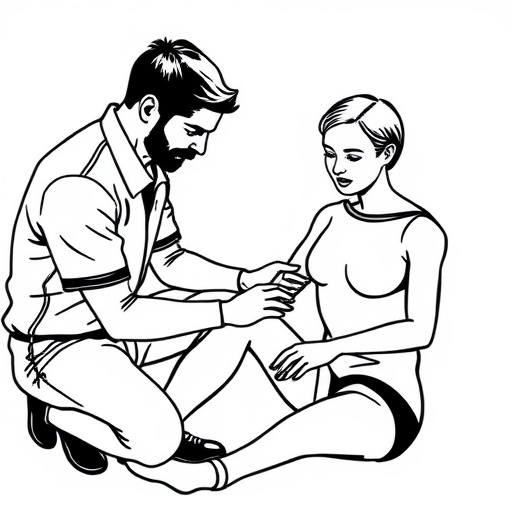Ergonomic injury treatment (EIT) coverage is crucial for managing musculoskeletal disorders related to repetitive tasks or poor posture, offering financial aid and medical services including physical therapy. Understanding EIT options involves reviewing insurance policies, gathering medical records, preparing detailed claim forms, and adhering to deadlines. Well-prepared claims increase the likelihood of successful compensation, enabling access to necessary treatments like physiotherapy for work-related injuries.
Ergonomic injuries, often overlooked yet prevalent in today’s work environments, can significantly impact an individual’s well-being and productivity. Understanding and navigating ergonomic injury treatment coverage is crucial for workers seeking compensation for related medical expenses. This article guides you through the process of filing claims, offering a comprehensive step-by-step approach. From grasping the fundamentals of ergonomic injury treatment coverage to considering key factors for successful claims, it equips readers with essential knowledge to advocate for their rights and access much-needed care.
- Understanding Ergonomic Injury Treatment Coverage
- Filing Your Claim: Step-by-Step Process
- Important Considerations for a Successful Claim
Understanding Ergonomic Injury Treatment Coverage

Ergonomic injury treatment coverage refers to insurance plans that offer financial assistance and medical services for injuries related to repetitive motion or poor work posture. These types of injuries, often called musculoskeletal disorders, are common in today’s world where many individuals spend long hours sitting at desks or performing manual tasks. Understanding what is covered under this category is crucial for anyone seeking treatment for such ailments.
Knowing the extent of coverage can facilitate smoother post-injury care and sports injury recovery processes. Many policies include provisions for physical therapy, medication, and even ergonomic equipment to aid in auto accident recovery and prevent further damage. By familiarizing yourself with these benefits, you empower yourself to navigate your insurance options effectively and secure the necessary resources for a successful treatment plan, regardless of whether it’s for a sports injury, an auto accident, or a work-related ergonomically induced condition.
Filing Your Claim: Step-by-Step Process

Filing a claim for ergonomic injury treatment coverage is a crucial step toward securing the necessary care and compensation for your condition. The process can seem daunting, but breaking it down into manageable steps simplifies the journey. Firstly, gather all relevant information about your injury, including medical records, reports from healthcare professionals, and any evidence related to your workplace or equipment that contributed to the ergonomic issue. This documentation is vital when presenting your case.
Next, review your insurance policy thoroughly to understand the specific terms and conditions regarding ergonomic injury treatment coverage. Different policies vary, so ensure you know what is covered and what might require additional documentation. Prepare a comprehensive claim form, detailing your injuries, symptoms, and the events leading up to them. Include any relevant dates, locations, and descriptions of how the injury occurred, as these details are essential for processing. Submit the completed form along with all necessary supporting documents to the appropriate claims department. Keep records of every step, including deadlines for submissions, to ensure a smooth and efficient claims process. Remember that a well-prepared claim significantly increases the likelihood of a positive outcome, potentially leading to faster access to treatment and headache relief.
Important Considerations for a Successful Claim

When filing an ergonomic injury treatment claim, there are several important considerations to ensure a successful outcome. Firstly, it’s crucial to gather comprehensive medical documentation detailing your injuries and their connection to your work environment or activities. This includes diagnostic tests, physician notes, and treatment plans, especially if you’re seeking coverage for specialized services like physical therapy or rehab.
Additionally, timely filing is essential. Be mindful of deadlines for submitting claims, as missing them can hinder your chances of receiving the necessary ergonomic injury treatment coverage. Also, clearly articulate the circumstances leading to your injuries in any claim forms or communications with insurance providers. Demonstrating a clear link between your injuries and potential ergonomic hazards will strengthen your case.
Ergonomic injury treatment coverage is a valuable benefit that can significantly aid in managing and treating work-related musculoskeletal disorders. By understanding your rights and following a structured claim filing process, you can ensure access to necessary medical care and potentially reduce the financial burden associated with ergonomic injuries. Remember, proactive navigation of this process, coupled with comprehensive documentation, increases the chances of a successful claim.














